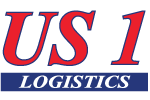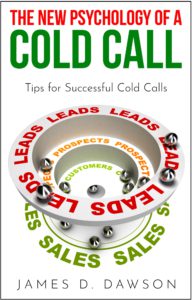Facebook isn’t dead—it’s just misunderstood. Here’s how freight pros still use it to grow.
When people talk social media strategy, Facebook usually gets the eye-roll. Too old. Too cluttered. Too noisy. But here’s the kicker—for freight broker agents, drayage agents, and intermodal pros, Facebook is still a powerhouse hiding in plain sight.
🚛 Why Freight Agents Shouldn’t Sleep on Facebook
Sure, LinkedIn gets all the B2B hype—but Facebook’s massive user base and industry-focused communities make it perfect for freight agent brokers who know how to work it. From joining niche logistics groups to running soft-touch campaigns through Messenger, Facebook is alive and well for those ready to use it strategically.
1. Freight Facebook Groups = Targeted Goldmines
Facebook Groups might be the most underrated lead-generation tool for freight broker agents today. Think of them as digital freight yards—places where deals start with conversations, not contracts. Search terms like “LTL Freight Brokers,” “Truckload Shippers,” “Freight Agents Network,” or “Hotshot Logistics,” and you’ll uncover dozens of niche communities buzzing with activity.
Inside these groups, it’s not uncommon to see shippers venting about a no-show carrier, asking for rate quotes, or looking for a reliable agent to help with overflow. Dispatchers drop load boards, freight agent brokers offer solutions, and transportation pros trade advice.
The secret? Don’t jump in with a sales pitch. Add value first. Answer a question. Share a helpful article. Mention a tactic that’s worked for your clients. When people see you show up as a helpful peer, they’re much more likely to trust you when it’s time to move freight.
Pro tip: Join 5–10 groups aligned with your freight niche—reefer, drayage, hotshot, LTL—and make it a habit to check in a few minutes a day. Comment where it counts, and watch for those shippers who post, “Need help ASAP.” That’s your cue to message privately with a thoughtful, not pushy, solution.
“I landed two recurring clients in Facebook freight groups by answering questions—no cold pitch needed.”
— Melissa T., Intermodal Agent
You’re not cold calling—you’re already in the room. That’s the beauty of Facebook freight groups.
2. Your Facebook Page = Your Digital Storefront
If you’re not running a business page yet, it’s time to make that move. A Facebook business page isn’t just for appearances—it’s a powerful hub for credibility, visibility, and lead generation. Think of it as your digital storefront where shippers can quickly learn who you are, what you offer, and why they should trust you with their freight.
Here’s what your business page should include:
-
Clear Service Breakdown: Are you focused on drayage, reefer, LTL, FTL, or intermodal? Spell it out clearly in your About section and services list.
-
Customer Testimonials: A few client wins, preferably with quotes or short videos, can go a long way in building trust.
-
FAQs: Answer the top 5 questions shippers ask you—things like pricing models, coverage areas, or communication process.
-
Route Specialties: Mention specific lanes, regions, or types of freight you handle regularly (e.g., “Serving Southeast refrigerated lanes with 24-hour turnaround”).
And don’t forget your keywords. Optimize your description with terms like freight broker agent, truck freight broker, independent freight agent, and regional phrases like “Midwest reefer loads” or “I-40 corridor freight solutions.” This helps both Facebook and Google point the right people to your page.
📅 Post 1–2 times per week with:
-
Client wins or case studies
-
Behind-the-scenes snapshots
-
Freight tips or market trends
Each post is another touchpoint—a reminder to prospects that you’re active, reliable, and ready to help.
🎯 Bonus: Once your page is up and running, you unlock access to powerful ad tools. That means you can target shippers by region, industry, or job title—and track which posts, services, and offers are getting the most clicks. For freight agent brokers who want to scale without guesswork, that’s a game-changer.
3. Messenger: Cold Call Vibes Without the Cold
Think of Facebook Messenger as the freight agent’s modern-day walk-up—less formal than email, more personal than LinkedIn, and way faster than a cold call. It’s texting for business, and when done right, it’s one of the best soft prospecting tools in your playbook.
Here’s the golden rule: don’t lead with a pitch. Lead with relevance.
Once someone has interacted with your Facebook business page—liked a post, commented on a thread, or posted in a group you’re both in—you’ve earned the green light to reach out.
Try this soft opener:
“Hey [Name], saw your post in [Group]—I work with shippers on similar Midwest lanes who’ve had issues with late pickups. Thought it might be worth a quick chat to swap notes.”
Why this works:
-
✅ It’s low-pressure – you’re not asking for a meeting, you’re inviting a conversation.
-
✅ It’s personalized – you reference their post or group, showing you’re not blasting a copy-paste message.
-
✅ It’s freight-focused – shippers care about solutions, not slogans. You’re offering value out of the gate.
💡 Pro Tip: After a few exchanges, move the conversation to a short call. Keep it casual:
“Sounds like we might have some overlap. Would a 10-minute call this week make sense just to share a few ideas?”
Freight broker agents, drayage pros, and intermodal specialists across the country are closing deals off Messenger—not by pushing, but by being present, professional, and helpful. And that’s the kind of outreach that builds trust and books loads.
4. Targeted Outreach That Doesn’t Feel Spammy
You don’t need a five-figure ad budget or an agency team to generate leads on Facebook. In fact, some of the best freight broker agents and trucking agents out there are using nothing more than the platform’s built-in search and filters to spark real conversations.
Think of it like digital door-knocking—with a lot more precision.
Head to Facebook’s search bar and try filtering for:
-
Job titles like “logistics manager,” “supply chain director,” or “distribution coordinator”
-
Industry pages tied to manufacturing, foodservice, construction, or retail
-
Locations—target cities or states you’re already active in (like “Tennessee logistics” or “Florida shippers”)
Once you find potential contacts, send a personalized connection request. Keep it short, freight-relevant, and respectful:
“Hi [Name], I work with shippers in [Region] and thought it’d be good to connect—happy to share insights on capacity or LTL routes anytime.”
Why it works:
-
🔍 It’s specific – You’re not blasting generic invites—you’re choosing people who fit your lane and freight type.
-
🤝 It’s collaborative – You’re offering value, not pitching right away.
-
🚛 It’s freight-relevant – You’re positioning yourself as a local or regional expert, which builds credibility fast.
💬 Next Step: After connecting, let the algorithm warm things up. Like or comment on one of their posts before sending a follow-up message. This simple engagement strategy builds familiarity and increases your chances of a reply.
Remember: people do business with people they know. And thanks to Facebook, you can start building those relationships one smart connection at a time.
Final Take: Facebook Isn’t Dead—It’s Just Waiting for You to Use It Differently
If you’re a freight agent, freight broker agent, or trucking agent trying to build visibility and close more loads, Facebook still deserves a spot in your marketing toolkit.
Need help creating freight-friendly Facebook content or Messenger templates? Message me—I’ve got proven strategies ready to roll. 💬


Recent Comments